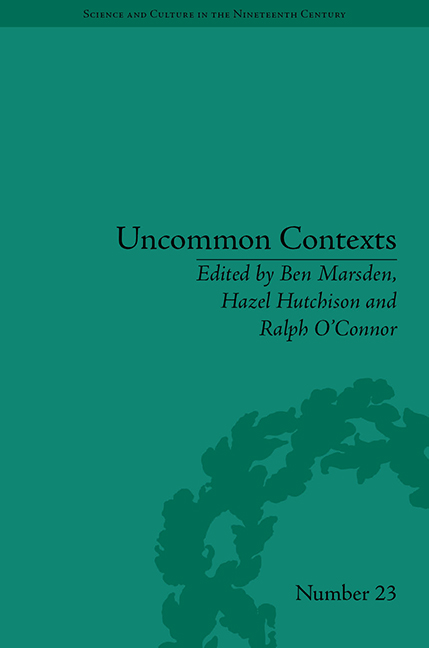Book contents
- Frontmatter
- Contents
- Acknowledgements
- List of Contributors
- List of Figures
- Introduction
- I Literary Genres of Science Writing
- II Pushing the Boundaries of ‘Literature and Science’
- 4 Re-reading Isambard Kingdom Brunel: Engineering Literature in the Early Nineteenth Century
- 5 Genre and Geometry: Victorian Mathematics and the Study of Literature and Science
- Part III Science and Technology in Fiction
- Notes
- Index
4 - Re-reading Isambard Kingdom Brunel: Engineering Literature in the Early Nineteenth Century
from II - Pushing the Boundaries of ‘Literature and Science’
- Frontmatter
- Contents
- Acknowledgements
- List of Contributors
- List of Figures
- Introduction
- I Literary Genres of Science Writing
- II Pushing the Boundaries of ‘Literature and Science’
- 4 Re-reading Isambard Kingdom Brunel: Engineering Literature in the Early Nineteenth Century
- 5 Genre and Geometry: Victorian Mathematics and the Study of Literature and Science
- Part III Science and Technology in Fiction
- Notes
- Index
Summary
Accounts of the engineer Isambard Kingdom Brunel have long emphasized his originality although not always in glowing terms. His ‘besetting fault’, stated The Times in 1859, was a ‘seeking for novelty, where the adoption of a well-known model would have sufficed’. Certainly Brunel had a flair for bold experiment and the many hagiographic treatments of him, marking him out as a ‘visionary’, have minimized his debts to his predecessors. Of course, Brunel did learn from others but, with engineers more often represented as men of works than of words, the fact that his knowledge and practice were bound up with literacy is rarely admitted. Even for the best known engineers, reading and writing await sustained historical attention. So too does the exploration of an early nineteenth-century ‘engineering literature’: those writings produced, consumed and variously appropriated in connection with engineering practice. It has been difficult to document literary practices for members of a notoriously ‘papyrophobic’ profession. In this chapter, however, I ask what Isambard Kingdom Brunel read and wrote, how he read and wrote, why he wrote as he did, what he wrote about the literary productions of others – and why he sometimes avoided, and advised others against using, print. Answers to those questions reveal a literary landscape of early nineteenth-century engineering.
- Type
- Chapter
- Information
- Uncommon ContextsEncounters between Science and Literature, 1800–1914, pp. 83 - 110Publisher: Pickering & ChattoFirst published in: 2014



